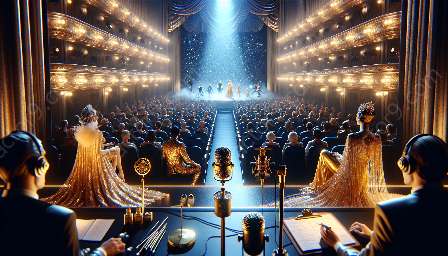Voice actors are artists who use their voices to convey emotions, narratives, and characters in performance art. One crucial aspect of their craft is the connection between vocal resonance and expressive performance. By understanding the relationship between vocal techniques and performance art, voice actors can elevate their skills and deliver captivating performances.
The Significance of Vocal Resonance
Vocal resonance refers to the vibrational quality of the voice and its ability to fill a space with sound. It is a key element in voice acting as it contributes to the overall impact of the performance. Voice actors utilize vocal resonance to create depth, emotion, and authenticity in their delivery.
Impact on Character Portrayal
When voice actors master vocal resonance, they can effectively embody a wide range of characters. Whether it's a villain with a deep, menacing resonance or a playful, high-pitched protagonist, vocal resonance adds layers of complexity to character portrayal. By modulating their vocal resonance, voice actors can bring characters to life in a compelling manner.
Emotional Expression
Expressive performance in voice acting relies heavily on the manipulation of vocal resonance. From conveying joy and excitement to sadness and fear, voice actors use varying levels of resonance to express nuanced emotions. This ability to harness vocal resonance allows voice actors to deeply connect with their audiences and evoke strong emotional responses.
Utilizing Vocal Techniques in Performance Art
Performance art encompasses a wide range of disciplines, including theater, film, animation, and video games, all of which heavily rely on vocal techniques for effective storytelling. The art of using vocal techniques in performance lies in the ability to convey a character's thoughts, feelings, and motivations through vocal expression.
Enhancing Theatrical Performances
Vocal resonance plays a significant role in theater and live performances. An actor's ability to project their voice and command the stage relies on vocal resonance. By mastering vocal techniques, performers can deliver compelling and powerful portrayals of their characters, captivating audiences with their expressive performances.
Aiding in Character Development
For voice actors and performers, understanding vocal resonance is crucial for creating authentic and relatable characters. By honing their vocal techniques, artists can breathe life into their characters, allowing the audience to connect with the nuances of their vocal performance.
Conclusion
The connection between vocal resonance and expressive performance for voice actors is a fundamental aspect of the art form. By mastering vocal techniques and understanding the impact of vocal resonance, voice actors can elevate their performances to new heights, captivating audiences through their ability to convey emotion, depth, and authenticity.




























